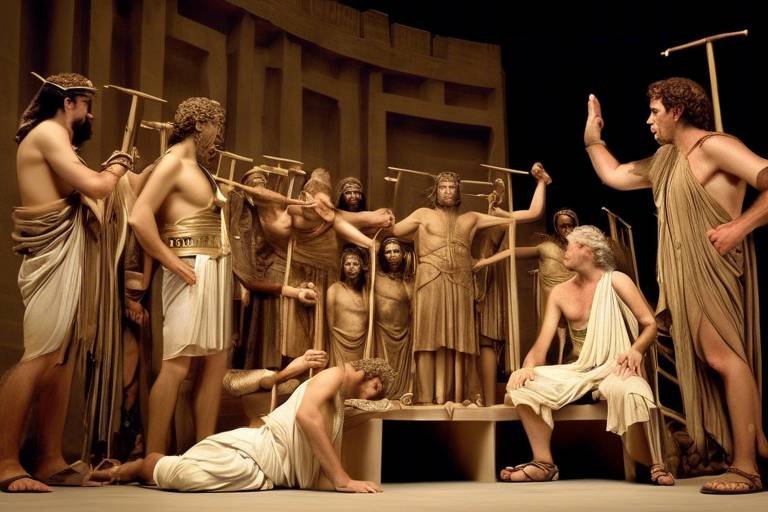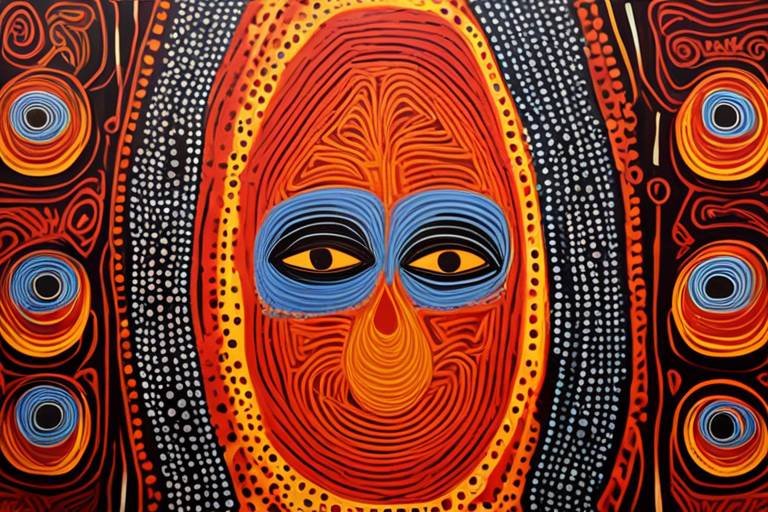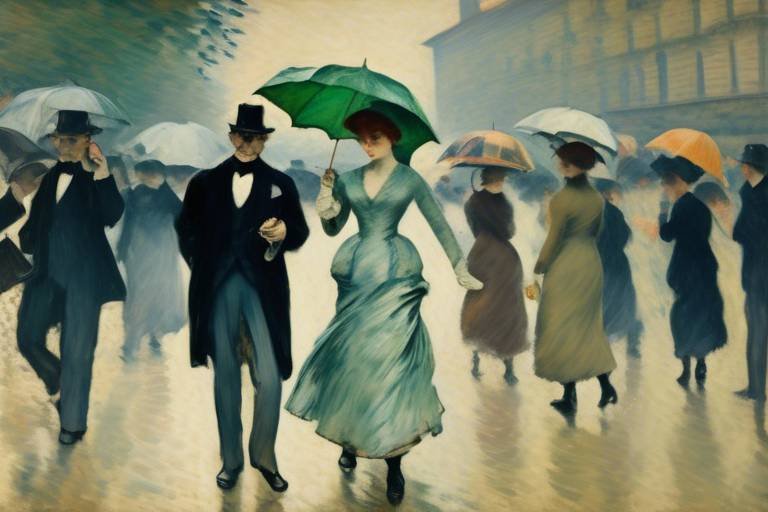The Legacy of the Bauhaus Movement in Modern Design
The legacy of the Bauhaus movement in modern design is a testament to its enduring influence on various creative fields. Originating in 1919 in Weimar, Germany, the Bauhaus movement, founded by Walter Gropius, aimed to merge art, craft, and technology in a revolutionary way. This fusion of disciplines laid the foundation for a new approach to design that emphasized functionality, minimalism, and the use of geometric shapes and primary colors.
One of the key principles of Bauhaus design is the integration of art and technology. By combining traditional craftsmanship with modern industrial techniques and materials, the Bauhaus movement transformed the design landscape, paving the way for innovative and forward-thinking creations.
In the realm of architecture, Bauhaus principles prioritize simplicity, functionality, and the utilization of modern materials to construct sustainable and groundbreaking structures. This approach continues to shape contemporary architectural trends, emphasizing clean lines and practicality in design.
When it comes to interior design, the Bauhaus legacy is evident in the emphasis on minimalism and the concept of "form follows function." Clean lines, open spaces, and a focus on practicality define Bauhaus-inspired interiors, showcasing a timeless aesthetic that remains relevant in modern design.
Graphic design also bears the mark of the Bauhaus movement, particularly in the use of typography, grid systems, and the integration of text and images in visual communication. Bauhaus design principles encourage graphic designers to experiment with layout, color, and visual hierarchy to create impactful and innovative designs that resonate with audiences.

Origins of the Bauhaus Movement
The Bauhaus movement, a revolutionary force in the world of design, has its origins traced back to the year 1919 in Weimar, Germany. It was founded by the visionary architect Walter Gropius, who aimed to create a new approach to design that would merge art, craft, and technology seamlessly. The Bauhaus school was established with the belief that all forms of art could be brought together to serve a common purpose, breaking down the barriers between different disciplines.
At its core, the Bauhaus movement sought to redefine the relationship between form and function in design. By emphasizing the practicality and functionality of objects, Bauhaus designers aimed to create products that were not only aesthetically pleasing but also served a purpose in everyday life. This philosophy marked a significant departure from the ornate and decorative styles prevalent at the time, paving the way for a more minimalist and utilitarian approach to design.
One of the key principles of the Bauhaus movement was the integration of art and technology. This innovative approach revolutionized the design process by combining traditional craftsmanship with modern industrial techniques and materials. The Bauhaus school became a hub of experimentation, where artists and designers explored new ways of creating objects that were both beautiful and practical.
As the Bauhaus movement gained momentum, it attracted a diverse group of artists, architects, and designers who shared a common vision of creating a new aesthetic language. The school's emphasis on collaboration and interdisciplinary learning fostered a dynamic creative environment, leading to the development of groundbreaking design ideas that would shape the course of modern design history.

Key Principles of Bauhaus Design
The Bauhaus movement, with its revolutionary approach to design, is built upon several key principles that have shaped the modern design landscape. At the core of Bauhaus design philosophy lies a deep emphasis on functionality, where every element serves a purpose beyond mere aesthetics. This focus on utility and practicality is evident in the clean lines and minimalist aesthetic that define Bauhaus creations. By stripping away unnecessary ornamentation and embracing simplicity, Bauhaus designers sought to create objects that were not only visually appealing but also highly functional.
Another fundamental principle of Bauhaus design is the use of geometric shapes and forms. The movement embraced the purity of geometric elements, such as squares, circles, and triangles, to create harmonious compositions that emphasized structure and order. This geometric approach to design is reflected in the furniture, architecture, and visual art produced during the Bauhaus era, showcasing a balance between form and function.
Additionally, Bauhaus design is characterized by the bold use of primary colors. By employing a limited color palette of primary hues – red, blue, and yellow – Bauhaus artists aimed to create vibrant, dynamic compositions that captured the essence of modernity. This emphasis on primary colors not only added a sense of vitality to Bauhaus creations but also underscored the movement's commitment to simplicity and clarity in design.

Integration of Art and Technology
The was a groundbreaking aspect of the Bauhaus movement, redefining the relationship between traditional craftsmanship and modern industrial techniques. This fusion of art and technology was not merely a juxtaposition but a harmonious integration that revolutionized the design world. Imagine the marriage of intricate handcrafted details with the precision and efficiency of industrial production, resulting in creations that were both aesthetically pleasing and functionally innovative.
At the core of this integration was the belief that art and technology could work hand in hand to create objects that were not only beautiful but also practical. The Bauhaus movement sought to blur the lines between art and industry, emphasizing the importance of both in the creation of meaningful and impactful designs. This approach paved the way for a new era of design thinking, one that embraced the possibilities offered by modern technologies while honoring the craftsmanship of the past.
By embracing technology in their creative process, Bauhaus designers were able to explore new materials, techniques, and forms that were previously inaccessible. This innovative spirit led to the development of revolutionary design solutions that pushed the boundaries of traditional aesthetics. The integration of art and technology in Bauhaus design was not just a stylistic choice but a philosophical stance that continues to inspire designers across various disciplines to this day.

Impact on Architecture
When we delve into the impact of the Bauhaus movement on architecture, we uncover a profound shift in the way buildings are conceptualized and constructed. Bauhaus architecture, with its emphasis on simplicity and functionality, has left an indelible mark on the architectural landscape, influencing generations of designers and architects.
One of the key aspects of Bauhaus architecture is its prioritization of functionality. Buildings are designed with a clear purpose in mind, focusing on how spaces will be used and experienced by occupants. This utilitarian approach ensures that every element of a structure serves a practical function, leading to efficient and purposeful design.
Furthermore, Bauhaus architecture embraces modern materials and construction techniques, pushing the boundaries of what is possible in building design. The movement's embrace of industrial materials such as steel and glass has paved the way for innovative and sustainable architectural solutions, challenging traditional notions of construction.
Another hallmark of Bauhaus architecture is its commitment to simplicity. Clean lines, geometric shapes, and unadorned facades characterize Bauhaus buildings, creating a sense of harmony and order. The focus on minimalism allows the form and function of a structure to shine through, unencumbered by unnecessary ornamentation.
Moreover, Bauhaus architecture values the integration of indoor and outdoor spaces, blurring the boundaries between the built environment and nature. Large windows, open floor plans, and seamless transitions between interior and exterior areas create a sense of fluidity and connection with the surrounding environment.
In conclusion, the impact of the Bauhaus movement on architecture is undeniable, shaping the way we think about design, function, and innovation in the built environment. By championing simplicity, functionality, and modern materials, Bauhaus architecture continues to inspire architects to push the boundaries of what is possible and create spaces that are both aesthetically pleasing and purposeful.

Continued Influence in Interior Design
When it comes to interior design, the legacy of the Bauhaus movement is undeniable. The principles of Bauhaus design continue to shape contemporary interior spaces, infusing them with a sense of functionality and aesthetic appeal. Clean lines, open spaces, and a focus on practicality are all hallmarks of Bauhaus-inspired interiors.
One of the key aspects of Bauhaus design that has persisted in interior design is the concept of minimalism. The idea that "less is more" is deeply ingrained in Bauhaus philosophy, and it is reflected in the simple yet elegant designs of modern interiors. By eliminating unnecessary ornamentation and focusing on essential elements, Bauhaus design creates spaces that are both visually pleasing and highly functional.
Moreover, the principle of "form follows function" championed by the Bauhaus movement is still a guiding force in interior design today. This approach emphasizes the importance of designing spaces based on their intended use, ensuring that every element serves a purpose. By prioritizing functionality over decoration, Bauhaus-inspired interiors achieve a sense of harmony and efficiency.
Another aspect of Bauhaus design that continues to influence interior design is the use of geometric shapes and primary colors. These elements add a sense of dynamism and visual interest to spaces, creating a modern and vibrant atmosphere. By incorporating geometric patterns and bold colors, interior designers can evoke the spirit of Bauhaus design in their projects, giving them a timeless and contemporary appeal.
In conclusion, the Bauhaus movement has left an indelible mark on the world of interior design. Its emphasis on functionality, minimalism, and the integration of art and technology has paved the way for innovative and inspiring interior spaces. By embracing the principles of Bauhaus design, interior designers can create spaces that are not only beautiful but also highly functional and practical.

Minimalism and Form Follows Function
Minimalism and Form Follows Function are two key principles that define the essence of Bauhaus design and continue to shape modern interior aesthetics. In the world of design, less is often more, and Bauhaus minimalism exemplifies this notion perfectly. The concept of minimalism in Bauhaus design emphasizes simplicity, clean lines, and the removal of any unnecessary elements. It focuses on functionality and practicality, stripping away embellishments to reveal the true essence of an object or space.
Form Follows Function is another fundamental principle of Bauhaus design that emphasizes the importance of the purpose or function of a design in determining its form. This principle rejects ornamentation for the sake of decoration and instead prioritizes the utility and usability of an object. In Bauhaus interior design, this principle translates into furniture and spaces that are not only visually appealing but also serve a specific purpose efficiently.
Imagine a chair designed following the Form Follows Function principle. Its design would be dictated by the need for comfort and support, leading to a sleek and ergonomic structure devoid of unnecessary frills. This approach ensures that every element of the design serves a practical function, resulting in a harmonious blend of form and utility.

form follows function
Form follows function is a fundamental principle in design that emphasizes the importance of the function or purpose of a product or structure in determining its form or design. This concept, closely associated with the Bauhaus movement, prioritizes the practical utility of an object over its aesthetic appearance. In essence, the form of an object should be a direct result of its intended function, with every element serving a specific purpose to enhance usability and efficiency.

in shaping modern interior design aesthetics.
Exploring how the principles of the Bauhaus movement continue to influence contemporary design trends and innovations in various fields such as architecture, interior design, and graphic design.
Tracing the roots of the Bauhaus movement back to its founding in 1919 by Walter Gropius in Weimar, Germany, and its initial focus on merging art, craft, and technology.
Examining the core principles of Bauhaus design, including the emphasis on functionality, minimalism, geometric shapes, and the use of primary colors.
Discussing how the Bauhaus movement revolutionized design by integrating traditional craftsmanship with modern industrial techniques and materials.
Exploring how Bauhaus architecture prioritizes simplicity, functionality, and the use of modern materials to create innovative and sustainable structures.
Analyzing how Bauhaus design principles are still prevalent in contemporary interior design, characterized by clean lines, open spaces, and a focus on practicality.
Highlighting the enduring influence of Bauhaus minimalism and the concept of form follows function in shaping modern interior design aesthetics.
Examining the impact of Bauhaus on graphic design, particularly in the use of typography, grid systems, and the integration of text and images in visual communication.
Exploring how Bauhaus design principles continue to inspire graphic designers to experiment with layout, color, and visual hierarchy to create impactful and innovative designs.

Bauhaus in Graphic Design
The Bauhaus movement, known for its revolutionary approach to design, has left a lasting impact on the world of graphic design. By emphasizing the fusion of art and technology, Bauhaus principles have influenced how designers approach visual communication. Typography plays a significant role in Bauhaus graphic design, with a focus on clean, sans-serif fonts and innovative layouts.
Grid systems, a key component of Bauhaus design, are widely used in graphic design to create structured and visually appealing compositions. The integration of text and images in a harmonious way is another hallmark of Bauhaus graphic design, emphasizing the importance of balance and unity in visual communication.
Graphic designers inspired by the Bauhaus movement often experiment with color, shape, and form to convey powerful messages and evoke emotions through their designs. Visual hierarchy, a fundamental principle of Bauhaus design, guides the viewer's eye through the layout, ensuring that the most important information stands out.

Experimental Approaches and Visual Hierarchy
When it comes to in graphic design, the Bauhaus movement continues to serve as a wellspring of inspiration for designers seeking to push the boundaries of traditional design norms. By embracing the Bauhaus philosophy of experimentation and innovation, designers are encouraged to explore unconventional approaches to layout, color usage, and visual hierarchy.
One of the key aspects of Bauhaus design that influences experimental approaches is the emphasis on breaking away from conventional design rules and norms. This freedom allows designers to think outside the box and create visually striking compositions that challenge the viewer's perception and expectations.
Visual hierarchy, a fundamental principle in graphic design, is another area where Bauhaus principles play a significant role. By guiding the viewer's eye through a design in a deliberate manner, designers can create a sense of order and importance within the composition. Bauhaus-inspired designers often use bold contrasts, scale variations, and strategic placement of elements to establish a clear visual hierarchy that captures attention and conveys meaning effectively.
Furthermore, Bauhaus design encourages the use of geometric shapes, asymmetry, and innovative typography to create dynamic visual compositions that engage the audience on multiple levels. This approach allows designers to experiment with different visual elements and arrangements to evoke specific emotions or convey complex messages in a visually compelling way.
Overall, the experimental approaches and emphasis on visual hierarchy derived from the Bauhaus movement continue to shape the landscape of graphic design by inspiring designers to think creatively, challenge conventions, and craft visually impactful designs that resonate with audiences in a meaningful way.
Frequently Asked Questions
- What is the Bauhaus movement?
The Bauhaus movement was a revolutionary art and design movement that emerged in Germany in 1919. It aimed to merge art, craft, and technology to create functional and aesthetically pleasing designs across various disciplines.
- What are the key principles of Bauhaus design?
The key principles of Bauhaus design include functionality, minimalism, use of geometric shapes, and primary colors. Bauhaus designers believed in the idea that form should follow function, emphasizing practicality and simplicity in their creations.
- How does Bauhaus influence modern architecture?
Bauhaus has had a significant impact on modern architecture by prioritizing simplicity, functionality, and the use of modern materials. Bauhaus architecture focuses on creating innovative and sustainable structures that reflect the movement's design principles.
- What is the significance of Bauhaus in interior design?
Bauhaus principles continue to influence contemporary interior design with its emphasis on clean lines, open spaces, and practicality. Minimalism and the concept of form follows function are key aspects of Bauhaus-inspired interior design.
- How does Bauhaus influence graphic design?
Bauhaus has played a crucial role in shaping graphic design, particularly in typography, grid systems, and the integration of text and images. Graphic designers draw inspiration from Bauhaus principles to create visually impactful and innovative designs.



















